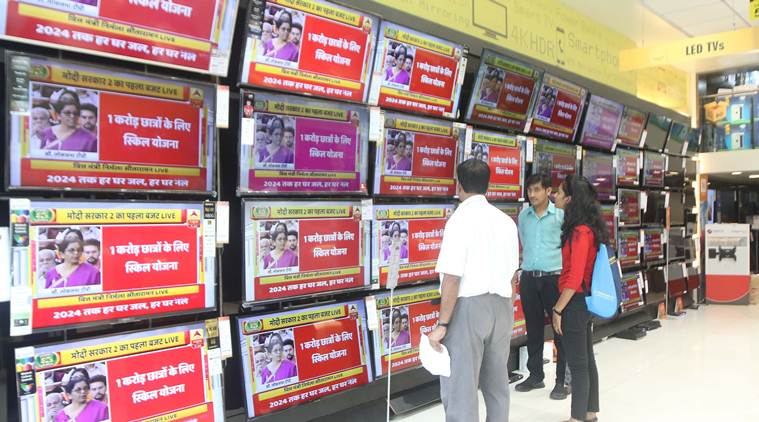
Five years ago, when Dr Arvind Subramanian, then Chief Economic Adviser, presented his first Economic Survey (2014-15), he said, “India has reached a sweet spot — rare in the history of nations — in which it could finally be launched on a double-digit medium-term growth strategy.” He did not stay the full term of Modi 1.0 government to acknowledge that the government had failed to deliver on that promise. It was left to his successor Dr Krishnamurthy Subramanian to admit that Modi 1.0 government delivered an average GDP growth of only 7.5 per cent over the five-year period.
A growth rate of 7.5 per cent is satisfactory but nowhere near the target of double digit growth. Besides, the trajectory of the growth rate over the last five years was 7.4, 8.0, 8.2, 7.2 and 6.8 per cent. Dr Subramanian must have been pleased with the rise from 7.4 to 8.2 per cent in the first three years but, I suspect, must have been devastated when demonetisation hit the country in November 2016. Since then, the trajectory has been a decline from 8.2 to 7.2 to 6.8 per cent.
Modi 2.0 government has taken office when the decline has become steeper. The quarterly components of the growth rate of 2018-19 were 8.0, 7.0, 6.6 and 5.8 per cent. It is in this dire situation that the new CEA had set the goal of the Modi 2.0 government as:
“India aims to grow into a USD 5 trillion economy by 2024-25, which will make India the third largest economy in the world. Given 4 per cent inflation as the Monetary Policy Framework specified by the Government for the Reserve Bank of India, this requires real annual growth rate in GDP of 8 per cent.”
That is a fair target. The question before us is, how far did the maiden Budget of Ms Nirmala Sitharaman advance the goal set by the Economic Survey?
Each one of us can list a number of boxes and ask ourselves, based on the Budget statements, how many boxes has the Finance Minister (FM) ticked.
In October 2018, 13 economists of international repute, all Indians or of Indian origin, wrote 14 papers, that were published in 2019, under the title ‘What the Economy Needs Now’. Dr Abhijit Banerjee and Dr Raghuram Rajan sifted through the set of ideas and wrote an afterword listing ‘Eight top challenges India faces’. Each one of them concerns the economy, directly or indirectly. For my list of boxes, I have borrowed five ideas from the book.
Here are the boxes and why I have ticked or crossed them:
X Containing Fiscal Deficit: The Modi government has a poor record in containing the fiscal deficit. In the first five years, it was able to reduce the fiscal deficit from 4.5 to 3.4 per cent. Actually, the fiscal deficit was stuck between 3.4 and 3.5 per cent for four years and Budget 2019-20 promises to bring it down to 3.3 per cent. The number for 2018-19 is suspect because of huge revenue losses and off-Budget borrowings in that year. So, the estimate of fiscal deficit for 2019-20 is also suspect.
X Stressed Sectors (Agriculture, Power, Banking): The Budget speech contains no measure to relieve the stress in the agriculture sector. On power, it simply reiterates the current scheme, UDAY, aimed at financial and operational turnaround of distribution companies. It adds ‘retirement of old and inefficient plants’ and ‘addressing low utilisation of gas plant capacity due to paucity of natural gas’. On banking, it promises to provide Rs 70,000 crore for recapitalisation of public sector banks (that is totally insufficient) and ‘one-time six months’ partial credit guarantee’ to banks to purchase pooled assets of financially sound NBFCs (that completely misses the point about insufficient liquidity).
X Better Business Environment: There were several ideas on the table to make the business environment ‘better’. What good will it do if business did the same things in the same manner and only ‘doing’ that business became easier? Special Industrial Zones, not necessarily targeted at exports; changing labour laws, not just codifying them; allowing start-ups to start and run businesses for three years without the need to secure permissions or licences, etc, were ideas that could have been accepted.
X Less Burdensome Regulation: The best solution was massive decentralisation. To begin, school education must be transferred to the states — as it was in the original Constitution — to be followed by transferring more subjects from the Concurrent List to the State List. On the contrary, the FM has assumed a greater role for the Central government in school and college education! The RBI, SEBI, Competition Commission of India, CBDT, CBIC, etc, have turned into controllers and the regulations have become more, not less, burdensome.
Y More Cash Transfers: On this, the government has moved forward to encourage digital payments and to disincentivise large cash withdrawals. It is natural that more subsidies and cash benefits will be transferred through the Direct Benefit Transfer route. Though this ‘reform’ is seven years old, I shall tick this box.
The economy needed radical reforms of the kind undertaken in 1991-96. The government had the mandate to carry out such reforms. Inexplicably, the government has chosen to do incremental reforms. The 13 economists — all Indians or of Indian origin — will be disappointed. So will be many who were rooting for radical reforms.
This article first appeared in the print edition on July 7, 2019 under the title ‘Across the aisle: Why 13 economists will be unhappy.’